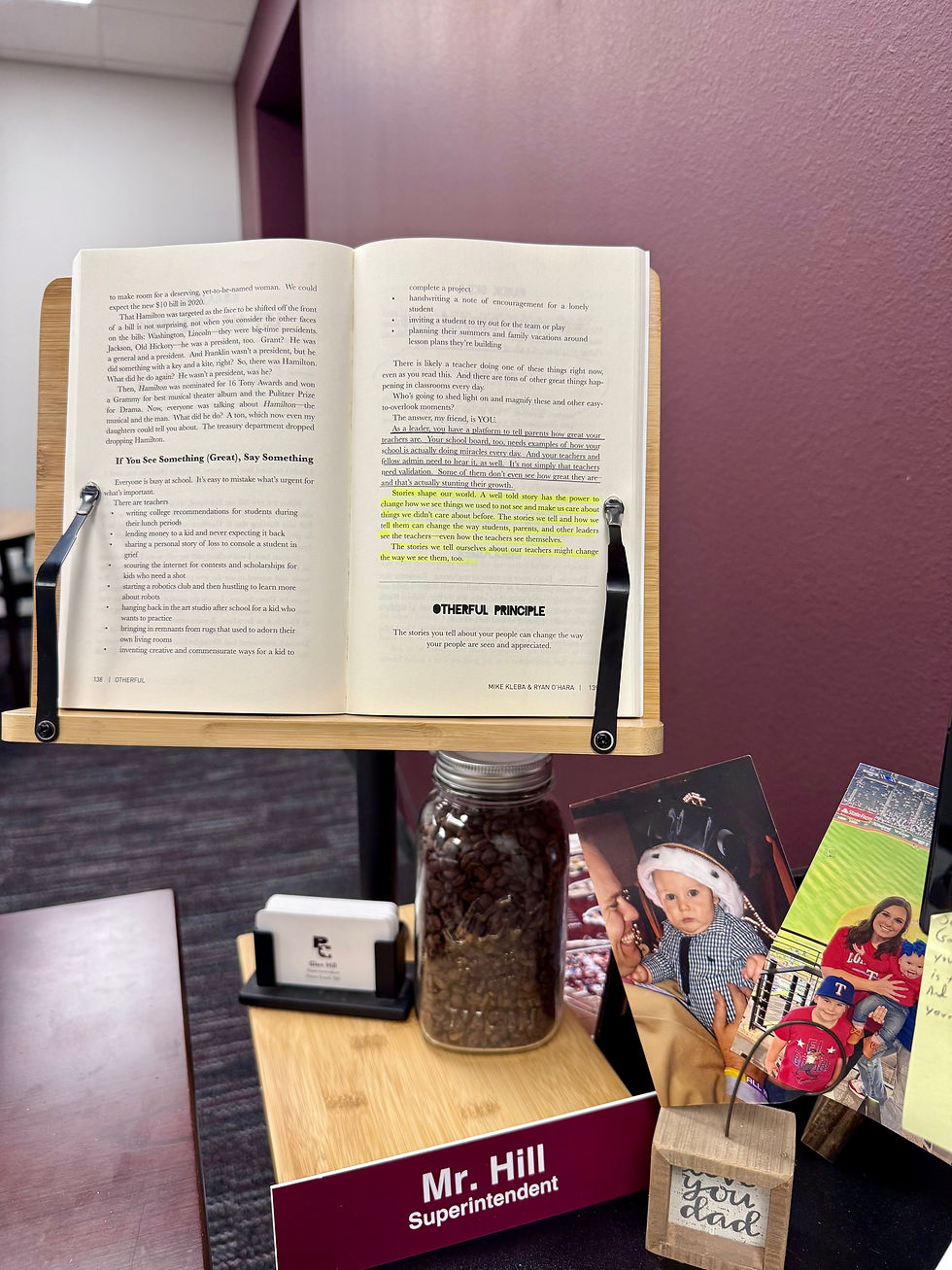Rethinking "Culture"
- Glen Hill
- Dec 16, 2024
- 3 min read
In a recent conversation I had with Dr. Todd Whitaker, he told me, “Culture is bullshit.”
Now, I don’t normally curse, but I think the power of that word is necessary here. It grabbed my attention — and it hasn’t left my mind since.
For so long, we’ve been told to “change the culture” or “build the right culture” in our schools. But here’s the hard truth I’m wrestling with: Culture isn’t something we can see, touch, or control directly. It’s not the mission statement on the wall or the schedule we follow. It’s not the school colors or even the core values we put in our handbooks.

Culture exists in people’s minds. That’s it. It’s a collection of shared thoughts, beliefs, and perspectives about “how things are done around here.” If we want to change the culture, we don’t change the building — we change people’s minds.
And here’s where it gets even more real. The culture does not want to change. It clings to “what’s always been.” The only people who actually want culture to change are often the very people who make your school great — your best people. So as a leader, it’s my job to make sure the good guys win. If I don’t support and amplify those people, they’ll either check out or leave — and that leaves the wrong folks in control of the status quo.
This has me thinking about how real change actually happens. Instead of trying to “fix the culture” all at once, maybe the better approach is to support and protect a smaller group of people who are ready to try something new. You give them space, you remove obstacles, and you make sure they win. Why? Because momentum matters. Change doesn’t happen because people are told to change. Change happens when people see something better and want to be part of it.
This whole reflection forced me to look in the mirror as a leader. If I’m being honest, if there’s a toxic or struggling culture, there’s often a leadership issue behind it. And here’s the part that stings: It’s easier for people to say, “the culture is bad” than to say, “the leader is bad.” That one hit me hard. It’s a reminder that if I’m not actively shaping the culture, it’s shaping itself. And if I’m not careful, it’s being shaped by people who have no business leading it.
The most practical shift I’ve taken from all this is this: Change the climate first. Climate is something people can feel immediately. It’s the energy, the mood, the small interactions that make up a day. For example, if every adult in a school decided that, starting today, they would personally greet every student with a smile and a kind word, you’d feel the climate shift immediately. But here’s the key: If we never stop doing it, it eventually becomes part of the culture.
Change today, and you change the climate. Never change back, and you change the culture.
If we want to start seeing positive change in our organizations, look in the mirror first and put your best people in charge. It’s not about being the smartest person in the room — because at Paint Creek, the smartest person in the room isn’t Mr. Hill — it’s the room. It’s the collective wisdom, insight, and ideas of the people in it that shape the future. The people in the room are your biggest resource, and it’s the people who will ultimately shift the culture.
That’s why this next point might be the most important of all:
“If we do not understand and appreciate our best people, someone else will.” (Whitaker, pp. 32, 2025)
The good ones — the ones who want better, strive for better, and push for better — are also the ones who have options. If we fail to recognize, support, and empower them, they’ll find somewhere else that will. And if we lose them, the very people who could shift the culture are now shifting someone else’s.
Whitaker, T. (2025). How to get all teachers to become like the best teacher. Routledge.



Comments